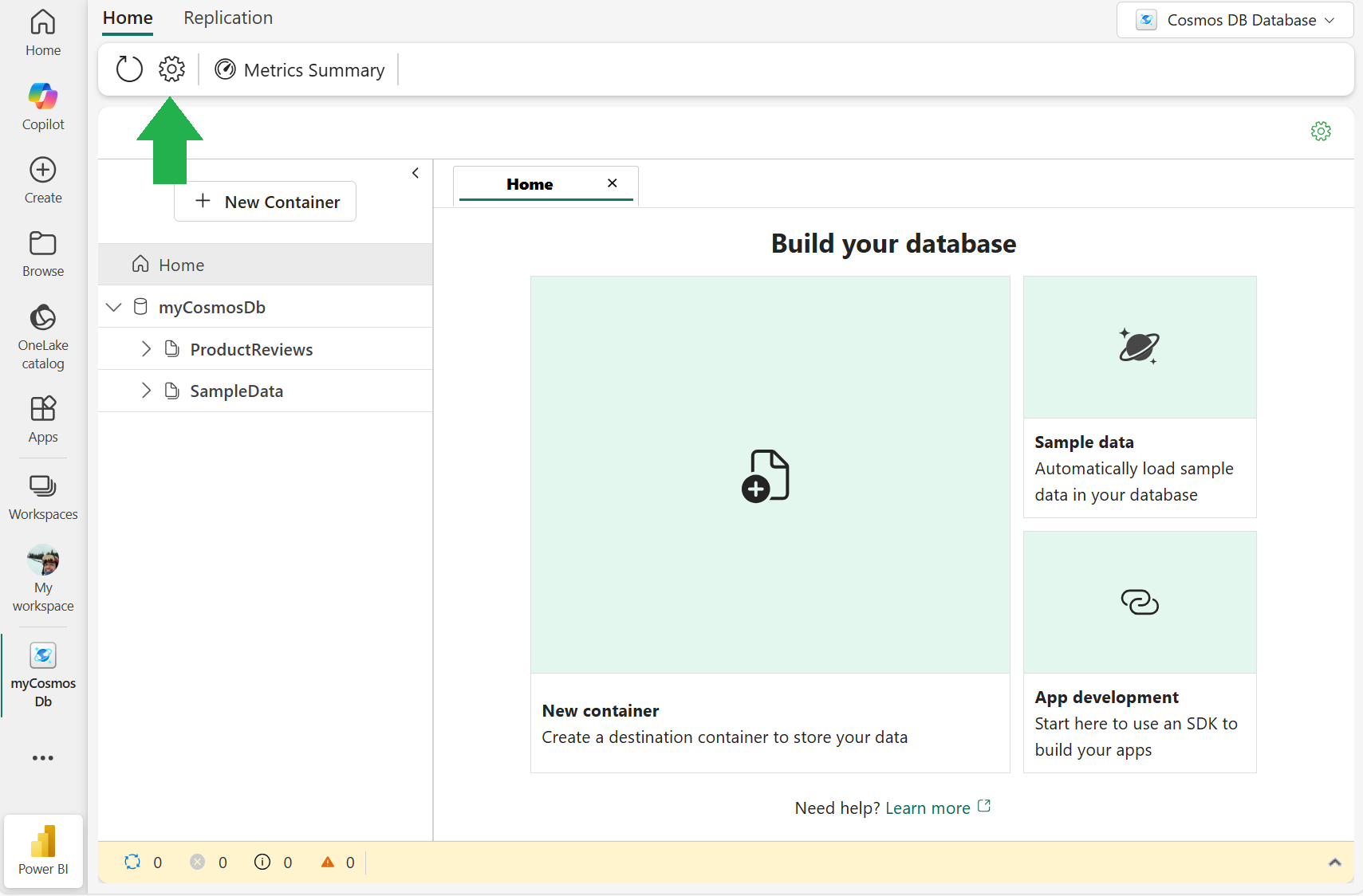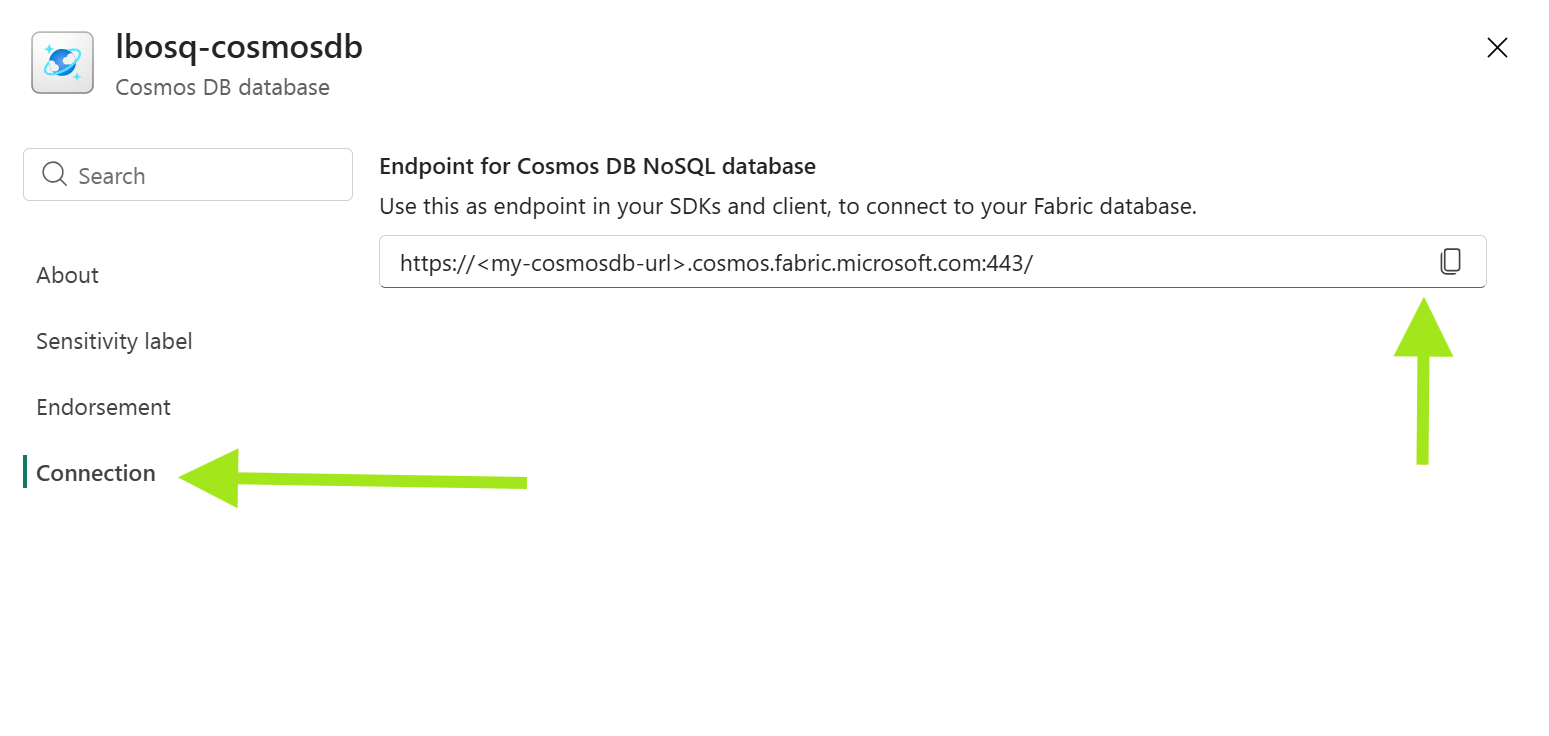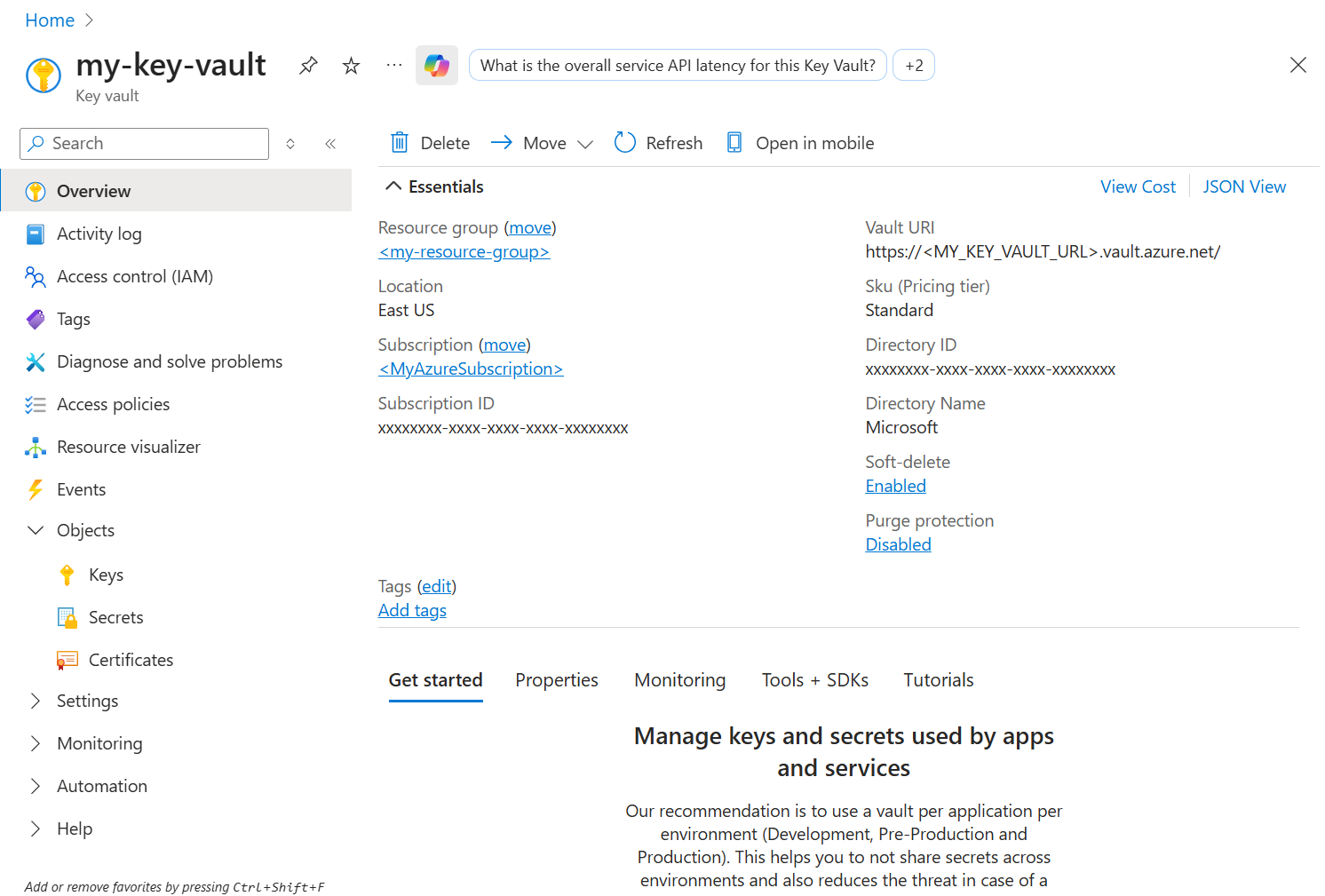Note
Access to this page requires authorization. You can try signing in or changing directories.
Access to this page requires authorization. You can try changing directories.
The Fabric User data functions programming model is an SDK that provides the necessary functionality to author and publish runnable functions in Fabric. The SDK also allows you to seamlessly integrate with other items in the Fabric ecosystem, such as Fabric data sources. This library is publicly available in PyPI and is pre-installed in your user data functions items.
User data functions SDK
A user data functions item contains one or many functions you can invoke from the Fabric portal, from another Fabric item, or from an external application using the provided REST endpoint. Each function is a method in your Python script that allows passing parameters and returning an output to the invoker. The User data functions programming model contains the following components:
The
fabric.functionslibrary provides the code you need to create user data functions in Python. You can see this library being imported in your first function template when you create a new user data functions item.The method
fn.UserDataFunctions()provides the execution context found at the beginning of the code file in all new user data functions items, before any function definitions.Example:
import datetime import fabric.functions as fn import logging udf = fn.UserDataFunctions()Every function is identified with a
@udf.function()decorator. This decorator defines if your function can be invoked individually from the portal or an external invoker. Using this decorator will also require the function to have a return value. Functions with this decorator can access the connection objects denoted by the@udf.connectiondecorator.Invokable function example
# This is a hello fabric function sample that can be invoked from the Fabric portal, another Fabric item, or an external application. @udf.function() def hello_fabric(name: str) -> str: logging.info('Python UDF trigger function processed a request.') logging.info('Executing hello fabric function.') return f"Welcome to Fabric Functions, {name}, at {datetime.datetime.now()}!"Any Python methods without the
@udf.function()decorator can't be invoked directly. They can only be invoked from functions that contain the decorator, and can be used as helper functions.Helper function example
# This is a helper function that can be invoked from other functions, but can't be invoked or run directly because it doesn't have the @udf.function() decorator def uppercase_name(name: str) -> str: return name.upper()
Supported input types
You can define input parameters for the function such as primitive data types like str, int, float, etc. The supported input data types are:
| JSON Type | Python Data type |
|---|---|
| String | str |
| Datetime string | datetime |
| Boolean | bool |
| Numbers | int, float |
| Array | list[], example list[int] |
| Object | dict |
| Object | pandas DataFrame |
| Object or Array of Objects | pandas Series |
Note
To use pandas DataFrame and Series types, select Library management in Fabric portal for your user data function and update fabric-user-data-function version to 1.0.0.
Example of request body for input types supported:
{
"name": "Alice", // String (str)
"signup_date": "2025-07-08T13:44:40Z", // Datetime string (datetime)
"is_active": true, // Boolean (bool)
"age": 30, // Number (int)
"height": 5.6, // Number (float)
"favorite_numbers": [3, 7, 42], // Array (list[int])
"profile": { // Object (dict)
"email": "alice@example.com",
"location": "Sammamish"
},
"sales_data": { // Object (pandas DataFrame)
"2025-07-01": {"product": "A", "units": 10},
"2025-07-02": {"product": "B", "units": 15}
},
"weekly_scores": [ // Object or Array of Objects (pandas Series)
{"week": 1, "score": 88},
{"week": 2, "score": 92},
{"week": 3, "score": 85}
]
}
Supported output types
The supported output data types are:
| Python Data type |
|---|
| str |
| datetime |
| bool |
| int, float |
| list[data-type], for example list[int] |
| dict |
| None |
| pandas Series |
| pandas DataFrame |
How to write an async function
Add async decorator with your function definition in your code. With an async function you can improve responsiveness and efficiency of your application by handling multiple tasks at once. They are ideal for managing high volumes of I/O-bound operations. This example function reads a CSV file from a lakehouse using pandas. Function takes file name as an input parameter.
import pandas as pd
# Replace the alias "<My Lakehouse alias>" with your connection alias.
@udf.connection(argName="myLakehouse", alias="<My Lakehouse alias>")
@udf.function()
async def read_csv_from_lakehouse(myLakehouse: fn.FabricLakehouseClient, csvFileName: str) -> str:
# Connect to the Lakehouse
connection = myLakehouse.connectToFilesAsync()
# Download the CSV file from the Lakehouse
csvFile = connection.get_file_client(csvFileName)
downloadFile = await csvFile.download_file()
csvData = await downloadFile.readall()
# Read the CSV data into a pandas DataFrame
from io import StringIO
df = pd.read_csv(StringIO(csvData.decode('utf-8')))
# Display the DataFrame
result=""
for index, row in df.iterrows():
result=result + "["+ (",".join([str(item) for item in row]))+"]"
# Close the connection
csvFile.close()
connection.close()
return f"CSV file read successfully.{result}"
Data connections to Fabric data sources
This module allows you to reference the data connections without the need for writing connection strings in your code. The fabric.functions library provides two ways to handle data connections:
- fabric.functions.FabricSqlConnection: Allows you to work with SQL databases in Fabric, including SQL Analytics endpoints and Fabric warehouses.
- fabric.functions.FabricLakehouseClient: Lets you work with Lakehouses, with a way to connect to both Lakehouse tables and Lakehouse files.
To reference a connection to a data source, you need to use the @udf.connection decorator. You can apply it in any of the following formats:
@udf.connection(alias="<alias for data connection>", argName="sqlDB")@udf.connection("<alias for data connection>", "<argName>")@udf.connection("<alias for data connection>")
The arguments for @udf.connection are:
argName, the name of the variable the connection uses in your function.alias, the alias of the connection you added with the Manage connections menu.- If
argNameandaliashave the same value, you can use@udf.connection("<alias and argName for the data connection>").
Example
# Where demosqldatabase is the argument name and the alias for my data connection used for this function
@udf.connection("demosqldatabase")
@udf.function()
def read_from_sql_db(demosqldatabase: fn.FabricSqlConnection)-> list:
# Replace with the query you want to run
query = "SELECT * FROM (VALUES ('John Smith', 31), ('Kayla Jones', 33)) AS Employee(EmpName, DepID);"
# [...] Here is where the rest of your SqlConnection code would be.
return results
Generic connections for Fabric items or Azure resources
Generic connections allow you to create connections to Fabric items or Azure resources using your User Data Functions item owner identity. This feature generates an Entra ID token with the item owner's identity and a provided audience type. This token is used to authenticate with Fabric items or Azure resources that support that audience type. This process will give you a similar programming experience to using managed connections objects from the Manage Connections feature but only for the provided audience type in the connection.
This feature uses the @udf.generic_connection() decorator with the following parameters:
| Parameter | Description | Value |
|---|---|---|
argName |
The name of the variable that is passed to the function. The user needs to specify this variable in the arguments of their function and use the type of fn.FabricItem for it |
For example, if the argName=CosmosDb, then the function should contain this argument cosmosDb: fn.FabricItem |
audienceType |
The type of audience that the connection is created for. This parameter is associated with the type of Fabric item or Azure service and determines the client used for the connection. | The allowed values for this parameter are CosmosDb or KeyVault. |
Connect to Fabric Cosmos DB container using a generic connection
Generic connections support native Fabric Cosmos DB items by using the CosmosDB audience type. The included User Data Functions SDK provides a helper method called get_cosmos_client that fetches a singleton Cosmos DB client for every invocation.
You can connect to a Fabric Cosmos DB item using a generic connection by following these steps:
In your Fabric User Data Functions item, install the
azure-cosmoslibrary using the Library Management experience.Go to your Fabric Cosmos DB item settings.
Retrieve your Fabric Cosmos DB endpoint URL.
Go to your User Data Functions item. Use the following sample code to connect to your Fabric Cosmos DB container and run a read query using the Cosmos DB sample dataset. Replace the values of the following variables:
COSMOS_DB_URIwith your Fabric Cosmos DB endpoint.DB_NAMEwith the name of your Fabric Cosmos DB item.
from fabric.functions.cosmosdb import get_cosmos_client import json @udf.generic_connection(argName="cosmosDb", audienceType="CosmosDB") @udf.function() def get_product_by_category(cosmosDb: fn.FabricItem, category: str) -> list: COSMOS_DB_URI = "YOUR_COSMOS_DB_URL" DB_NAME = "YOUR_COSMOS_DB_NAME" # Note: This is the Fabric item name CONTAINER_NAME = "SampleData" # Note: This is your container name. In this example, we are using the SampleData container. cosmosClient = get_cosmos_client(cosmosDb, COSMOS_DB_URI) # Get the database and container database = cosmosClient.get_database_client(DB_NAME) container = database.get_container_client(CONTAINER_NAME) query = 'select * from c WHERE c.category=@category' #"select * from c where c.category=@category" parameters = [ { "name": "@category", "value": category } ] results = container.query_items(query=query, parameters=parameters) items = [item for item in results] logging.info(f"Found {len(items)} products in {category}") return json.dumps(items)Test or run this function by providing a category name, such as
Accessoryin the invocation parameters.
Note
You can also use these steps to connect to an Azure Cosmos DB database using the account URL and database names. The User Data Functions owner account would need access permissions to that Azure Cosmos DB account.
Connect to Azure Key Vault using a generic connection
Generic connections support connecting to an Azure Key Vault by using the KeyVault audience type. This type of connection requires that the Fabric User Data Functions owner has permissions to connect to the Azure Key Vault. You can use this connection to retrieve keys, secrets, or certificates by name.
You can connect to Azure Key Vault to retrieve a client secret to call an API using a generic connection by following these steps:
In your Fabric User Data Functions item, install the
requestsand theazure-keyvault-secretslibraries using the Library Management experience.Go to your Azure Key Vault resource and retrieve the
Vault URIand the name of your key, secret or certificate.Go back to your Fabric User Data Functions item and use this sample. In this sample, we will retrieve a secret from Azure Key Vault to connect to a public API. Replace the value of the following variables:
KEY_VAULT_URLwith theVault URIyou retrieved in the previous step.KEY_VAULT_SECRET_NAMEwith the name of your secret.API_URLvariable with the URL of the API you'd like to connect to. This sample assumes that you are connecting to a public API that accepts GET requests and takes the following parametersapi-keyandrequest-body.
from azure.keyvault.secrets import SecretClient from azure.identity import DefaultAzureCredential import requests @udf.generic_connection(argName="keyVaultClient", audienceType="KeyVault") @udf.function() def retrieveNews(keyVaultClient: fn.FabricItem, requestBody:str) -> str: KEY_VAULT_URL = 'YOUR_KEY_VAULT_URL' KEY_VAULT_SECRET_NAME= 'YOUR_SECRET' API_URL = 'YOUR_API_URL' credential = keyVaultClient.get_access_token() client = SecretClient(vault_url=KEY_VAULT_URL, credential=credential) api_key = client.get_secret(KEY_VAULT_SECRET_NAME).value api_url = API_URL params = { "api-key": api_key, "request-body": requestBody } response = requests.get(api_url, params=params) data = "" if response.status_code == 200: data = response.json() else: print(f"Error {response.status_code}: {response.text}") return f"Response: {data}"Test or run this function by providing a request body in your code.
Get invocation properties using UserDataFunctionContext
The programming model also includes the UserDataFunctionContext object. This object contains the function invocation metadata and can be used to create specific app logic for certain invocation mechanisms.
The following table shows the properties for the UserDataFunctionContext object:
| Property Name | Data Type | Description |
|---|---|---|
| Invocation ID | string | The unique GUID tied to the invocation of the user data functions item. |
| ExecutingUser | object | Metadata of the user's information used to authorize the invocation. |
The ExecutingUser object contains the following information:
| Property Name | Data Type | Description |
|---|---|---|
| Oid | string (GUID) | The user's object ID, which is an immutable identifier for the requestor. This is the verified identity of the user or service principal used to invoke this function across applications. |
| TenantId | string (GUID) | The ID of the tenant that the user is signed into. |
| PreferredUsername | string | The preferred username of the invoking user, as set by the user. This value is mutable. |
To access the UserDataFunctionContext parameter, you must use the following decorator at the top of the function definition: @udf.context(argName="<parameter name>")
Example
@udf.context(argName="myContext")
@udf.function()
def getContext(myContext: fabric.functions.UserDataFunctionContext)-> str:
logging.info('Python UDF trigger function processed a request.')
return f"Hello oid = {context.executing_user['Oid']}, TenantId = {context.executing_user['TenantId']}, PreferredUsername = {context.executing_user['PreferredUsername']}, InvocationId = {context.invocation_id}"
Throw a handled error with UserThrownError
When developing your function, you can throw an expected error response by using the UserThrownError method available in the Python programming model. One use of this method is managing cases where the user-provided inputs fail to pass business validation rules.
Example
import datetime
@udf.function()
def raise_userthrownerror(age: int)-> str:
if age < 18:
raise fn.UserThrownError("You must be 18 years or older to use this service.", {"age": age})
return f"Welcome to Fabric Functions at {datetime.datetime.now()}!"
This UserThrownError method takes two parameters:
Message: This string is returned as the error message to the application that is invoking this function.- A dictionary of properties is returned to the application that is invoking this function.


